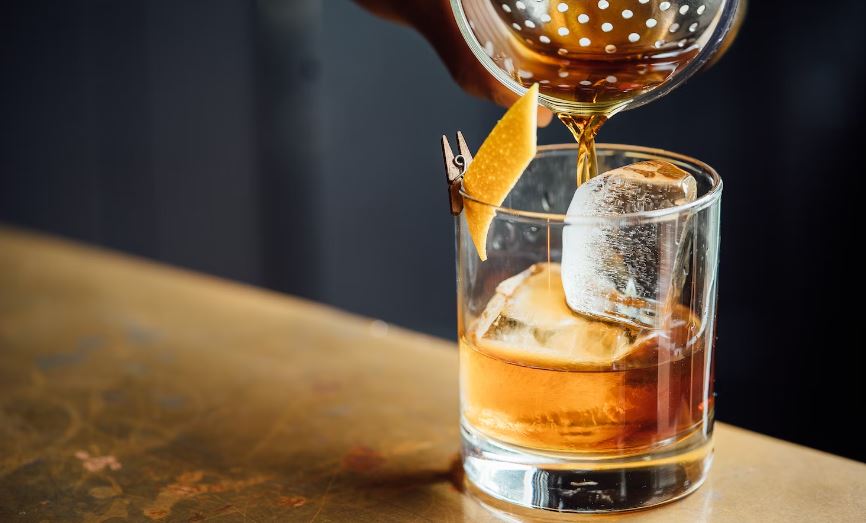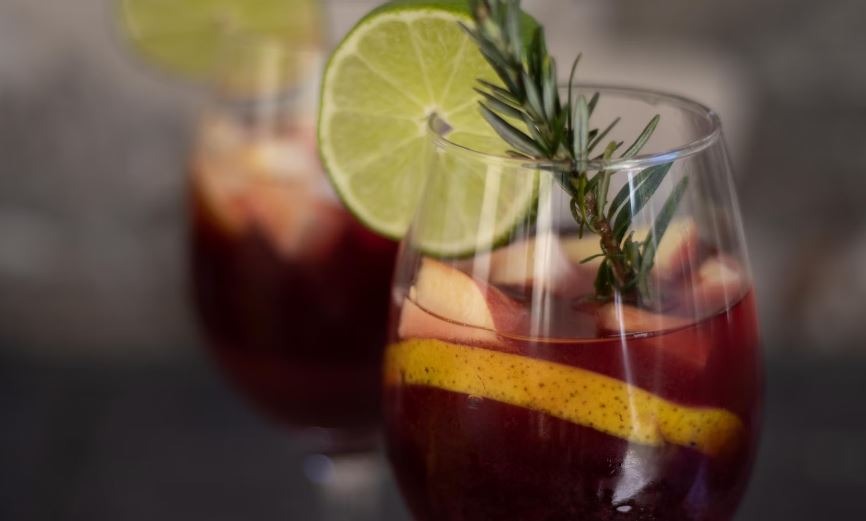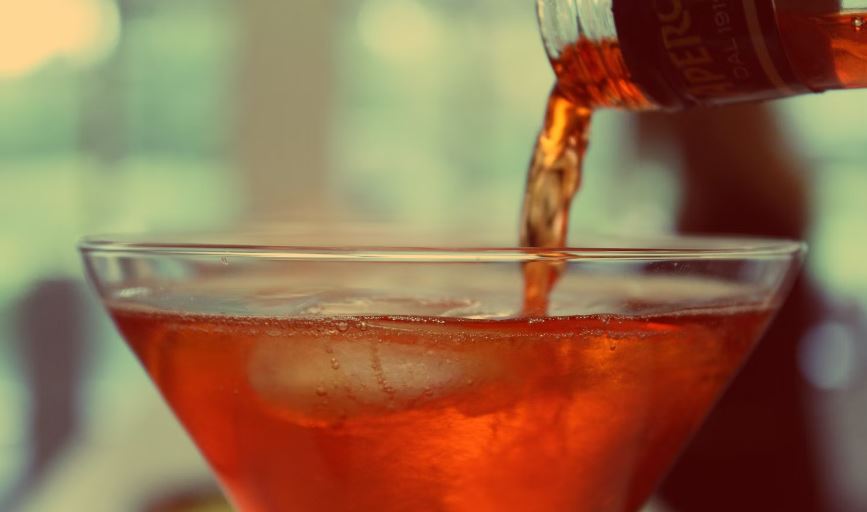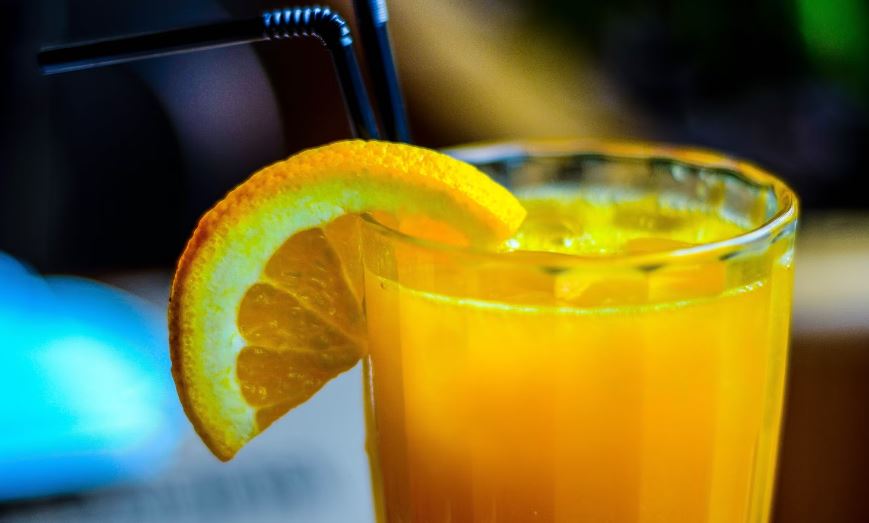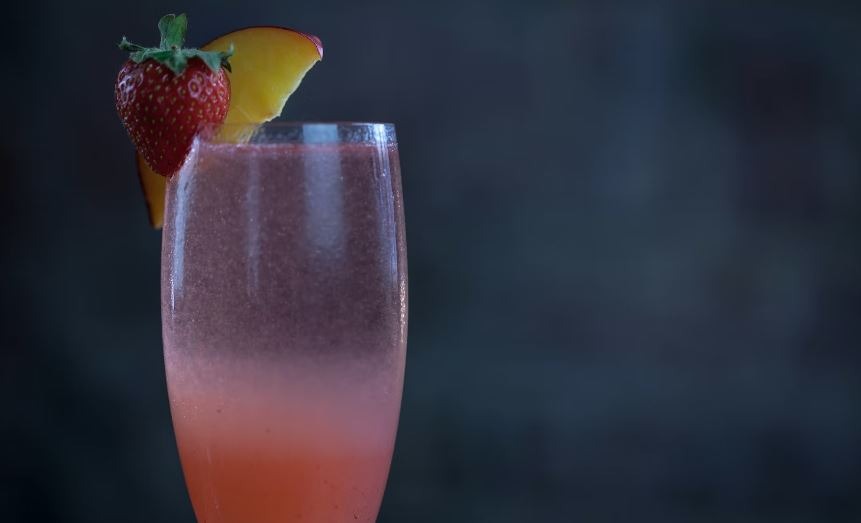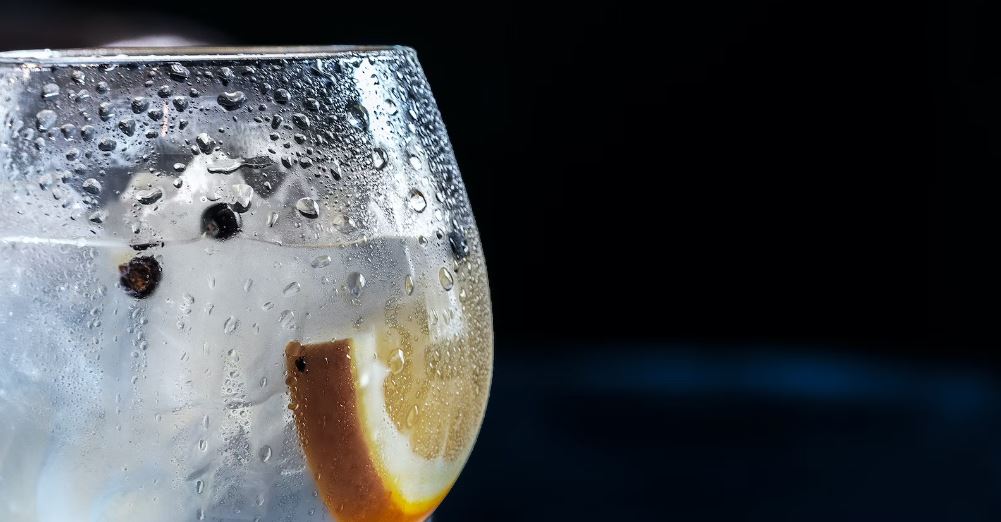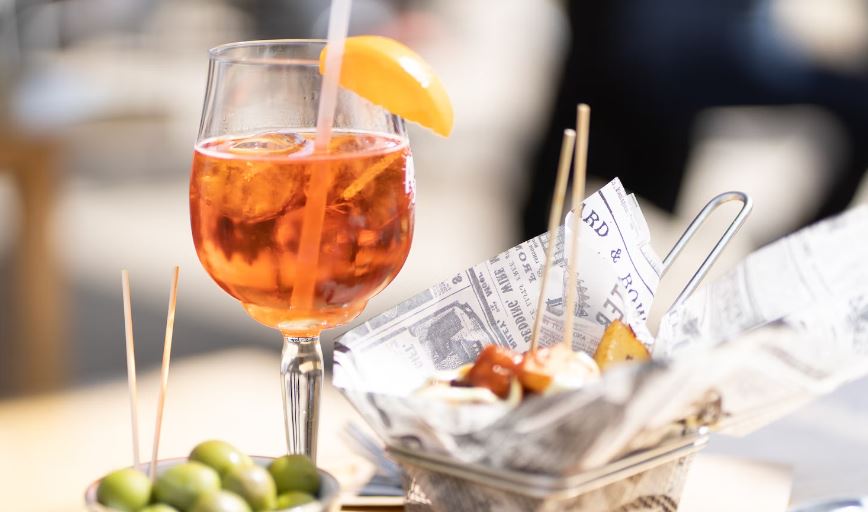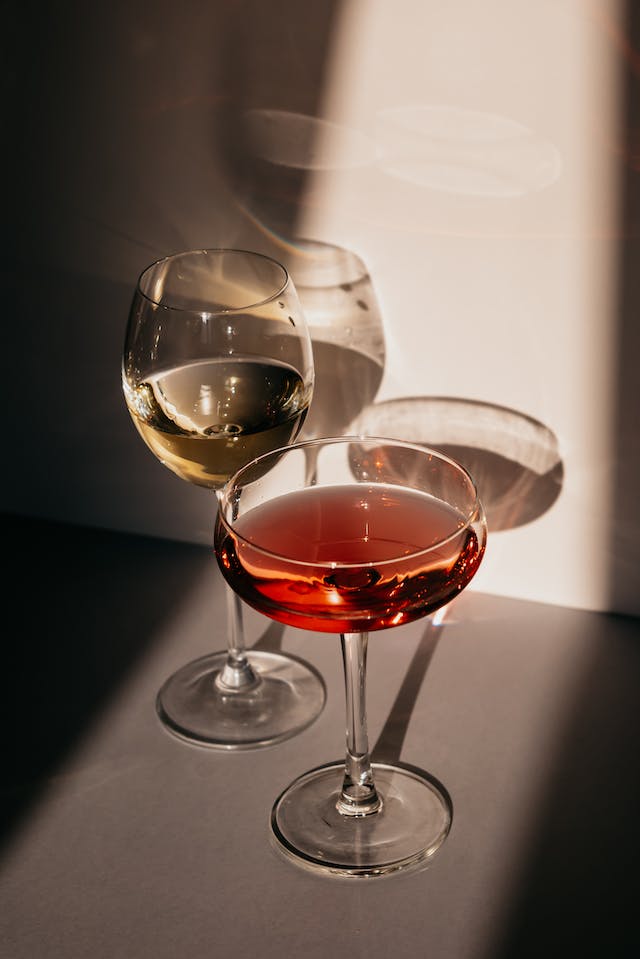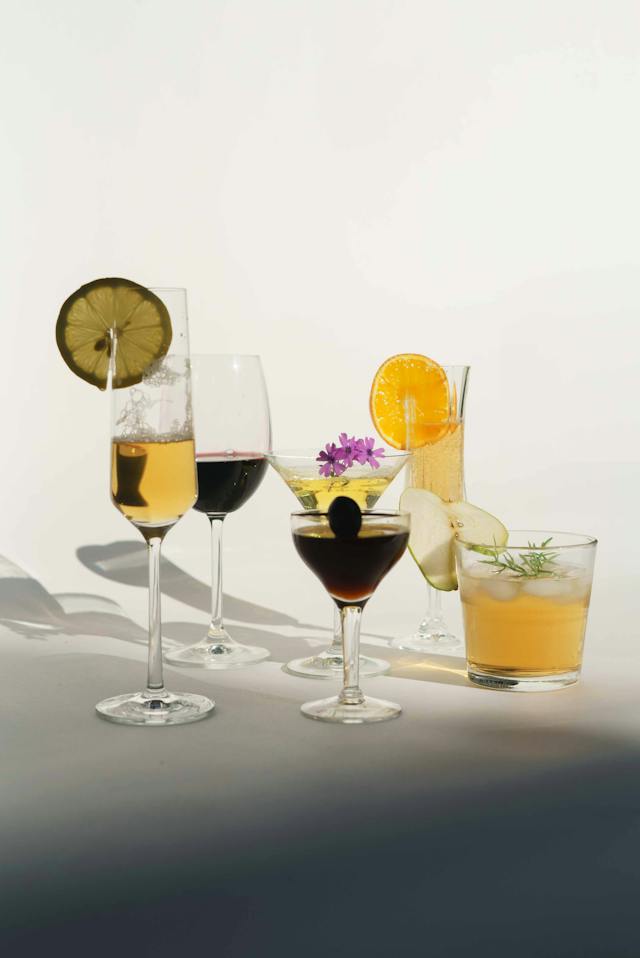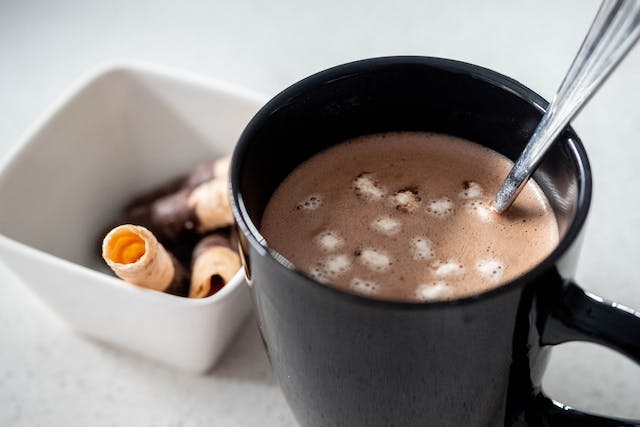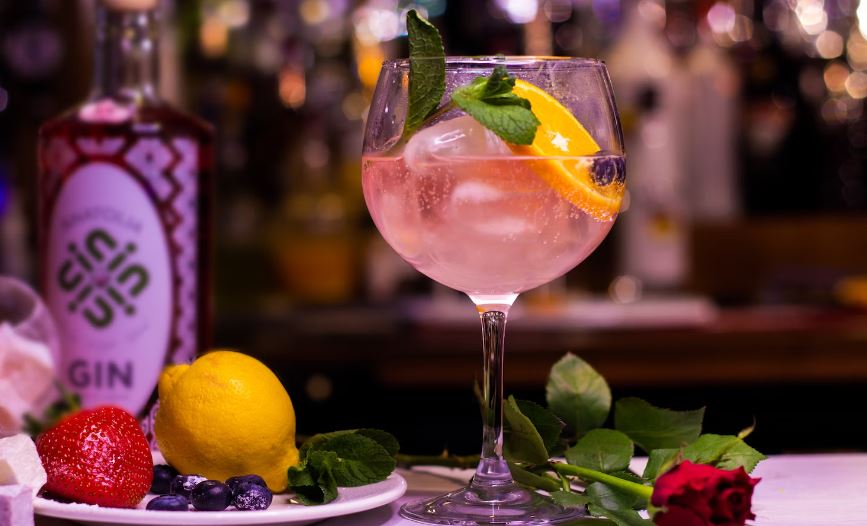Introduction
Enter the enchanted world of wine cocktails, where a symphony of ingredients combines with the complex and rich flavors of your favorite wines to produce a tempting assortment of libations.
From the sun-soaked sangrias of Spain to the effervescent elegance of French Kir, these concoctions take the noble grape to new heights, offering a delightful fusion of tradition and innovation. Whether you’re sipping a chilled glass of Mimosa at brunch or indulging in the warmth of a Red Wine Hot Chocolate on a winter’s evening, the spectrum of wine cocktails promises a thrilling journey for your taste buds. Embark on a whirlwind tour through the diverse and delectable world of wine-based libations, where every sip tells a story and every glass holds a new adventure. Cheers to the fusion of grapes and creativity!
Wine cocktails, often referred to as “wine cocktails” or “wine-based cocktails,” are beverages that combine wine with other ingredients to create refreshing and flavorful drinks. These cocktails can be a great way to enjoy wine in a new and creative way.
Here are some popular types of wine cocktails:
Sangria
Sangria is perhaps the most well-known wine cocktail. It typically combines red or white wine with fruit juices (often orange juice), sweeteners like sugar or simple syrup, and sliced fruits such as apples, oranges, and lemons. It’s typically served chilled and is very refreshing on a hot day.
Sangria is a popular wine cocktail with its origins in Spain, although variations of it are enjoyed in many parts of the world today. It’s known for its refreshing and fruity profile, making it an excellent choice for warm weather or social gatherings.
Sangria typically includes the following key ingredients:
1. Red Wine
While traditionally made with red wine, you can also find white sangria made with white wine. The choice of wine will influence the flavor profile. Spanish red wines like Tempranillo are commonly used.
2. Fruit
Sangria is characterized by its generous use of fresh fruit. Common choices include oranges, lemons, limes, apples, and sometimes berries or peaches. The fruit not only adds flavor but also enhances the visual appeal.
3. Sweetener
To balance the tartness of the fruit and wine, a sweetener is often added. Sugar, simple syrup, or fruit juices like orange juice are used. The amount can be adjusted to taste.
4. Liqueur or Brandy
Some recipes call for the addition of liqueurs like triple sec or brandy to boost the alcohol content and add depth to the flavor.
5. Soda or Sparkling Water
o give sangria a bit of effervescence, soda water or lemon-lime soda is added just before serving. This adds a delightful fizz.
Variations
Sangria is highly adaptable, and you can customize it to your liking. Some variations include:
- White Sangria. Made with white wine, often paired with fruits like peaches, green apples, and pears. White sangria may use white grape juice or peach schnapps as a sweetener.
- Sparkling Sangria. Instead of soda water, you can use sparkling wine or champagne to create a fizzy sangria.
- Rosé Sangria. For a pink twist, use rosé wine and pair it with strawberries, raspberries, and watermelon.
- Tropical Sangria. Incorporate tropical fruits like pineapple, mango, and kiwi for a taste of the exotic.
Sangria is a versatile and crowd-pleasing wine cocktail that can be tailored to your taste preferences. It’s a fantastic choice for outdoor gatherings, picnics, and summertime refreshment. Just remember to enjoy it responsibly, as it can be deceptively easy to drink due to its delightful flavor.
Kir
Kir is a classic French wine cocktail that originated in Burgundy, France. It’s a simple yet elegant drink that combines white wine with a splash of blackcurrant liqueur, typically crème de cassis. The Kir cocktail is named after Félix Kir, a former mayor of Dijon in Burgundy, who popularized the drink in the mid-20th century.
Here’s how to make a Kir:
Ingredients
1. White Wine
Traditionally, Kir is made with a dry, unoaked white wine such as Chablis or Aligoté. These wines provide a crisp and refreshing base for the cocktail.
2. Crème de Cassis
Crème de cassis is a candy liqueur crafted from blackcurrants. It has a rich, fruity flavor with a hint of tartness. You’ll need a small amount of this liqueur to create the distinctive Kir taste.
Variations
- Kir Royale. To make a Kir Royale, simply substitute the white wine with champagne or sparkling wine. This version is often considered more festive and luxurious.
- Kir Impérial. A Kir Impérial is similar to the Kir Royale but uses a higher-quality sparkling wine, such as Champagne.
- Kir Pêche. Instead of crème de cassis, you can use peach liqueur (such as peach schnapps) to create a Kir Pêche, which has a delightful peachy aroma.
Kir is celebrated for its simplicity, making it an excellent choice for those who enjoy wine cocktails without excessive sweetness. Its balanced combination of dry white wine and the fruity, slightly tart crème de cassis offers a harmonious and sophisticated taste. Whether you’re in a café in Dijon or sipping one at home, Kir is a classic cocktail that embodies French elegance.
Mimosa
A Mimosa is a classic brunch cocktail known for its simplicity and refreshing, bubbly nature. It’s a delightful combination of equal parts champagne (or sparkling wine) and chilled citrus juice, typically orange juice. The Mimosa is a beloved choice for morning celebrations, brunches, and special occasions.
Here’s how to make a Mimosa:
Ingredients
1. Champagne or Sparkling Wine
Traditionally, Champagne is used to make a Mimosa, but you can also use other sparkling wines like Prosecco or Cava. The choice of sparkling wine can influence the flavor and effervescence of the cocktail.
2. Orange Juice
Freshly squeezed orange juice is ideal for the best flavor, but you can also use high-quality store-bought orange juice if fresh isn’t available.
Variations
While the classic Mimosa is made with orange juice and sparkling wine, you can explore variations to suit your taste:
- Classic Mimosa. As described above, made with orange juice and champagne or sparkling wine.
- Pineapple Mimosa. Substitute the orange juice with pineapple juice for a tropical twist.
- Grapefruit Mimosa. Use freshly squeezed grapefruit juice for a tart and refreshing variation.
- Strawberry Mimosa. Add a splash of strawberry puree to the classic Mimosa for a fruity and vibrant twist.
- Mimosa Bar. Set up a Mimosa bar with various fruit juices (like mango, cranberry, or pomegranate), a selection of fresh fruit garnishes, and different sparkling wine options. This allows guests to customize their Mimosas.
Mimosas are not only delicious but also visually appealing, with their vibrant color and effervescence. They are a popular choice for celebratory brunches, bridal showers, and other daytime events. The Mimosa’s balance of sweet and tangy flavors, along with the bubbles from the sparkling wine, make it a versatile and enjoyable drink to kick off a day of festivities.
Bellini
The Bellini is a delightful and elegant Italian wine cocktail that is particularly popular during brunch or as a refreshing aperitif. It was created in Venice, Italy, at the famous Harry’s Bar in the 1930s. The Bellini is known for its beautiful pale pink color and sweet, fruity flavor.
Here’s how to make a classic Bellini:
Ingredients
1. Prosecco
The traditional choice for making a Bellini is Prosecco, an Italian sparkling wine. Its light and crisp nature pairs perfectly with the fruitiness of the cocktail.
2. White Peach Puree
Bellinis are typically made with white peach puree. Fresh, ripe white peaches are best, but you can also use high-quality canned or frozen peach puree if fresh peaches are not available.
Variations
The classic Bellini is a timeless favorite, but you can experiment with different fruit purees or liqueurs to create variations:
- Classic Bellini. Made with white peach puree and Prosecco.
- Strawberry Bellini. Substitute the peach puree with fresh strawberry puree for a vibrant red Bellini.
- Raspberry Bellini. Use raspberry puree for a bright pink version of the cocktail.
- Mango Bellini. Swap the peach puree for mango puree for a tropical twist.
- Kiwi Bellini. Experiment with kiwi puree for a unique green Bellini.
The Bellini is not only delicious but also a visually appealing cocktail due to its soft color and effervescence. It’s an excellent choice for special occasions, such as weddings, anniversaries, and romantic dinners, or simply for enjoying a taste of Italian elegance.
Spritzer
A Spritzer is a light and refreshing wine cocktail that combines wine with soda water or sparkling water, often served over ice. It’s a popular choice for those seeking a lower-alcohol, thirst-quenching beverage, especially during warm weather. Spritzers are known for their effervescence and ability to enhance the flavors of the wine.
Here’s how to make a classic wine spritzer:
Ingredients
1. Wine
Spritzers can be made with either white or red wine, depending on your preference. White wine spritzers are typically more common and are made with varieties like Sauvignon Blanc, Pinot Grigio, or Chardonnay. For red wine spritzers, lighter reds like Pinot Noir or a chilled Beaujolais are suitable choices.
2. Soda Water or Sparkling Water
Soda water or sparkling water adds fizziness to the spritzer. You can use plain or flavored sparkling water, such as lemon or lime, to enhance the cocktail’s flavor.
3. Ice
Ice is essential to keep the spritzer chilled and refreshing.
Variations
Spritzers are highly customizable, and you can create variations based on your preferences:
- Fruit-Infused Spritzer. Add fruit slices or muddled berries to the spritzer for extra flavor and a touch of sweetness.
- Wine Choice. Experiment with different wines, both white and red, to discover your favorite spritzer. Rosé wine is also a popular choice for its vibrant color and fruity character.
- Sweetener. If you prefer a sweeter spritzer, you can add a touch of simple syrup or a flavored liqueur like elderflower liqueur.
- Herbal Spritzer. Add fresh herbs like basil, thyme, or rosemary for a herbal twist.
- Sour Spritzer. Add a splash of lemon or lime juice for a tart and tangy variation.
Spritzers are versatile and easy to customize to your taste. They’re perfect for outdoor gatherings, picnics, or as a light and refreshing option when you want to enjoy wine without the full alcohol content.
Aperol Spritz
The Aperol Spritz is a popular Italian wine cocktail known for its vibrant orange hue and refreshing, bittersweet flavor. It’s a quintessential summer drink in Italy but has gained popularity worldwide for its delightful taste and visual appeal. The Aperol Spritz is characterized by its use of Aperol, an Italian aperitif, and is typically served with Prosecco and a splash of soda water.
Here’s how to make an Aperol Spritz:
Ingredients
1. Aperol
Aperol is a bright orange liqueur with a distinctive bittersweet and herbal flavor. It’s a key ingredient in the Aperol Spritz and gives the cocktail its characteristic taste.
2. Prosecco
Prosecco is an Italian sparkling wine known for its light and crisp nature. It pairs perfectly with Aperol and contributes effervescence to the cocktail.
3. Soda Water
Soda water or sparkling water adds a fizzy quality to the Spritz and helps dilute the Aperol and Prosecco for a more refreshing drink.
4. Orange Slice
An orange slice is commonly used as a garnish for the Aperol Spritz, adding a burst of citrus aroma and visual appeal.
5. Ice
Ice cubes are essential to keep the cocktail chilled.
Variations
While the classic Aperol Spritz is the most well-known version, you can experiment with variations to suit your taste:
- Aperol Sour. Add a splash of fresh lemon juice for a tangy twist.
- Aperol Rosé Spritz. Substitute Prosecco with rosé wine for a different flavor profile and a pink hue.
- Aperol Spritz with a Twist. Replace soda water with tonic water for a slightly different flavor and added bitterness.
The Aperol Spritz is a delightful aperitif or summer sipper, known for its balance of bitter and sweet notes, and its effervescent and refreshing qualities. It’s perfect for outdoor gatherings, al fresco dining, and enjoying the warm weather. The combination of Aperol’s herbal and citrus notes with the crispness of Prosecco makes it a favorite among those looking for a stylish and low-alcohol cocktail option.
Wine Cobbler
A Wine Cobbler is a classic cocktail that features wine as its primary ingredient, along with a blend of fruit, sweeteners, and sometimes a splash of spirits. It is a fruity, hydrating beverage that has historical roots in the 19th century. The name “cobbler” is believed to come from the cobblestone-like appearance of the ice that’s typically used to chill the drink.
Here’s how to make a traditional Wine Cobbler:
Ingredients
1. Wine
The choice of wine for a Wine Cobbler can vary, but it’s traditionally made with sherry, a fortified wine from Spain. You can also use white or red wine depending on your preference. Dry wines are often favored to balance the sweetness of the other ingredients.
2. Sweetener
A sweetener like simple syrup or sugar is used to balance the tartness of the wine and add sweetness to the cocktail. The amount can be adjusted to taste.
3. Fruit
The cobbler typically includes a variety of fresh fruit, such as berries, citrus slices, and sometimes pineapple or cherries. The fruit not only adds flavor but also serves as a garnish.
4. Spirits (Optional)
Some variations of the Wine Cobbler include a splash of spirits, such as brandy or liqueurs like curaçao or maraschino liqueur. This is optional and can add depth to the cocktail.
5. Crushed Ice
Crushed ice is a defining feature of the cobbler, as it chills the drink quickly and creates a frosty, refreshing texture.
Variations
The Wine Cobbler is highly adaptable, and you can customize it to your liking. Some variations include:
- Sherry Cobbler. Made with sherry wine, simple syrup, and fresh fruit. It’s a classic version of the cocktail.
- Brandy Cobbler. Substituting brandy for wine adds depth and warmth to the cocktail.
- Tropical Cobbler. Use a tropical fruit juice like pineapple or passion fruit to add a fruity twist to the cobbler.
- Berry Cobbler. Focus on fresh berries like strawberries, raspberries, and blueberries for a berry-forward cobbler.
The Wine Cobbler is a delightful, old-fashioned cocktail that combines wine’s flavors with the sweetness of fruit and a touch of ice-cold refreshment. It’s a versatile and visually appealing drink that’s perfect for warm weather or as a unique addition to your cocktail repertoire.
Wine Slushies
Wine Slushies are delightful frozen cocktails that combine wine with fruit flavors and ice to create a refreshing and icy treat. They’re perfect for warm weather, summer gatherings, or as a fun and colorful way to enjoy your favorite wine. Wine slushies are known for their vibrant colors and fruity, wine-infused taste. Here’s how to make wine slushies:
Ingredients
1. Wine
You can use white wine, red wine, rosé, or sparkling wine, depending on the flavor profile you desire. Dry wines work well, but you can adjust the sweetness level to your taste.
2. Fruit Puree
Fruit puree is the primary flavor component of wine slushies. You can use fresh or frozen fruit, such as strawberries, peaches, mangoes, or berries. Alternatively, you can use fruit juice or fruit-flavored syrups.
3. Sweetener (Optional)
Depending on the sweetness of your fruit and wine, you may want to add a sweetener like simple syrup or agave nectar to taste.
4. Ice
Ice is essential to create the slushy texture. You’ll need a good amount of ice to give the cocktail its frozen consistency.
Variations
Wine slushies are incredibly versatile, and you can create a wide range of flavors:
- Frosé. A popular wine slushie made with rosé wine, strawberries, and a touch of lemon juice for a frozen rosé experience.
- Peach Bellini Slush. Made with white wine, peach puree, and a splash of peach schnapps for a peachy twist.
- Mango Tango Slush. Blend white wine with mango puree and a hint of lime juice for a tropical treat.
- Berry Bliss Slush. Combine red wine with a mix of berries like strawberries, raspberries, and blueberries for a vibrant and fruity slushie.
- Sparkling Wine Slush. Use sparkling wine or Champagne for a bubbly and festive wine slushie.
Wine slushies are a fun and creative way to enjoy wine with a refreshing twist. They’re perfect for backyard parties, poolside lounging, or any occasion where you want to cool down with a flavorful and icy drink.
Red Wine Hot Chocolate
For a warm, comforting option, you can combine red wine with hot chocolate. This is a cozy winter treat often garnished with whipped cream or marshmallows.
A Red Wine Chocolate Cocktail is a delectable and indulgent cocktail that combines the rich and complex flavors of red wine with the lusciousness of chocolate. It’s a delightful choice for those who enjoy the combination of wine and chocolate. There are several ways to create this delicious concoction, but here’s a basic recipe to get you started:
Ingredients
1. Red Wine
You can use your favorite red wine for this cocktail. Popular choices include Cabernet Sauvignon, Merlot, or Pinot Noir. The wine should have a good balance of fruitiness and body.
2. Chocolate Liqueur
Chocolate liqueur, such as crème de cacao or a chocolate-flavored liqueur of your choice, is the key ingredient that adds the chocolatey sweetness to the cocktail.
3. Heavy Cream
Heavy cream adds a rich and creamy texture to the cocktail, complementing the chocolate and wine flavors.
4. Chocolate Shavings or Cocoa Powder (Optional)
These can be used for garnish to enhance the chocolate presentation and aroma.
Variations
- Mocha Red Wine Cocktail. Add a shot of espresso or strong coffee to the cocktail for a mocha-inspired version.
- Spiked Hot Chocolate. If you prefer a warm version, heat the mixture gently on the stovetop without boiling, then pour it into a mug. You can top it with whipped cream and a sprinkle of cocoa powder.
- Chocolate Red Wine Spritzer. Add soda water or sparkling water to the mixture for a lighter, fizzier version of the cocktail.
- Raspberry Chocolate Wine Cocktail. Muddle fresh raspberries or use raspberry liqueur for a fruity twist that pairs well with chocolate and red wine.
- Mexican Chocolate Red Wine Cocktail. Add a pinch of ground cinnamon and a dash of chili powder for a spicy and exotic twist.
The Red Wine Chocolate Cocktail is a luxurious and decadent treat that’s perfect for special occasions, dessert cocktails, or simply for indulging in a bit of chocolatey elegance. It combines the bold flavors of red wine with the sweet and creamy essence of chocolate, creating a delightful fusion of tastes and textures. Enjoy responsibly!
Port and Tonic
Similar to the Porto Tonico, this cocktail combines port wine with tonic water, creating a slightly sweeter and more robust version of the classic gin and tonic.
Port and Tonic is a simple yet delightful wine cocktail that combines the rich and robust flavors of port wine with the crisp and refreshing qualities of tonic water. It’s a popular choice in Portugal, especially during warm weather, and it’s known for its balance of sweet and bitter notes.
Here’s how to make a Port and Tonic:
Ingredients
1. Port Wine
Port wine is the primary ingredient and provides the cocktail with its distinctive flavor. Ruby port, which is a sweeter and fruitier variety, is commonly used for this cocktail.
2. Tonic Water
Tonic water adds effervescence and a slightly bitter note to the cocktail. You can use regular tonic water or opt for flavored tonic water to add a unique twist to the drink.
3. Lemon or Orange Peel (Optional)
A twist of lemon or orange peel can be used as a garnish for added aroma and presentation.
4. Ice
Ice cubes are essential for keeping the cocktail chilled and refreshing.
Variations
While the classic Port and Tonic is a straightforward and delightful drink, you can experiment with variations:
- Flavored Tonic Water. Try using flavored tonic water, such as elderflower tonic or citrus tonic, to add different dimensions of flavor to the cocktail.
- Fruit Garnish. Add a slice of lemon, orange, or a few berries for a fruity garnish.
- Herbal Twist. Infuse the cocktail with fresh herbs like mint or rosemary for an herbal twist.
- Sweetener (Optional). If you prefer a slightly sweeter drink, you can add a small amount of simple syrup or a fruit liqueur like elderflower liqueur.
The Port and Tonic is a versatile cocktail known for its balance of sweet and bitter notes. Its combination of port wine’s rich flavors and the effervescence of tonic water creates a crisp and refreshing cocktail that’s perfect for outdoor gatherings, al fresco dining, or simply for enjoying the warm weather.
Conclusion
It is discovered that wine, that age-old elixir, has the remarkable ability to transform itself into a myriad of delightful concoctions. From vibrant sangrias that dance with the flavors of summer to the sophisticated allure of Kir and the playful fizz of a spritzer, there’s a wine cocktail for every palate and occasion.
So, the next time you find yourself pondering the possibilities of your wine collection, remember that it’s not just about sipping it from a glass. Embrace the art of mixology and let your creativity flow as you craft these liquid symphonies, turning every moment into a toast-worthy celebration. Wine cocktails are more than drinks, they are an invitation to explore, experiment, and elevate the simple act of raising a glass into a memorable experience. Here’s to the endless adventures and endless flavors that await within the world of wine cocktails. Cheers!
